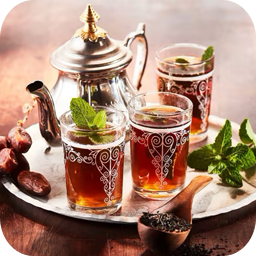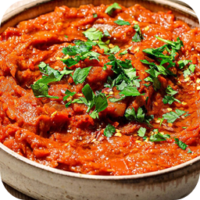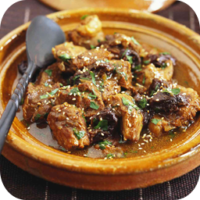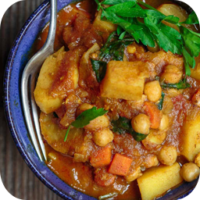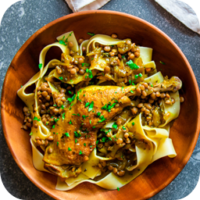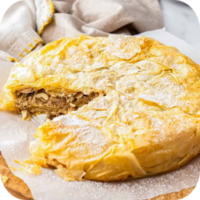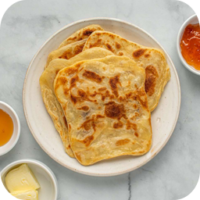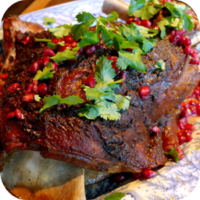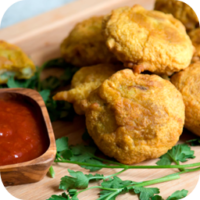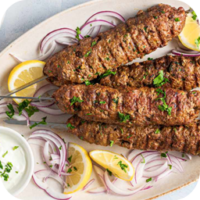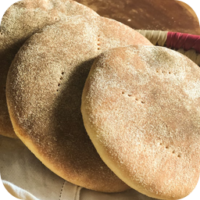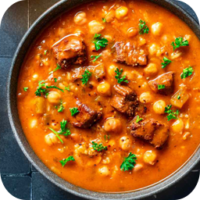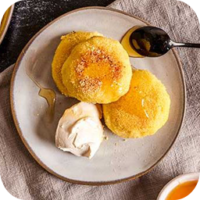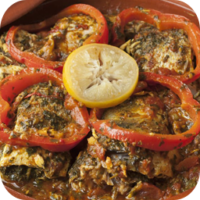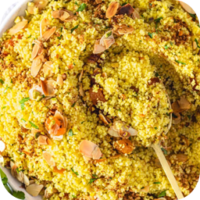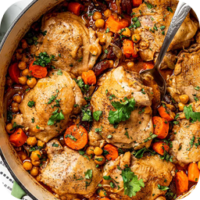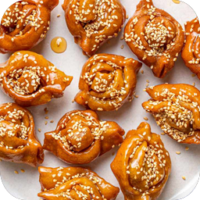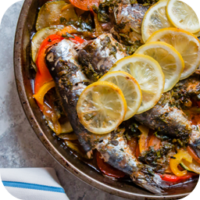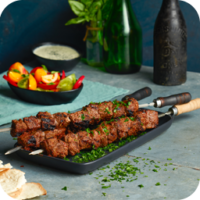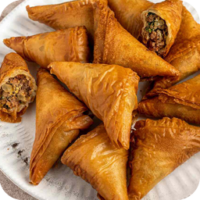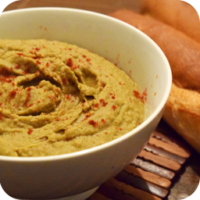Posted by theeatland
- Dec 24, 2024
- 87
- 0
Moroccan Mint Tea is one of the most iconic beverages in Moroccan culture, known for its refreshing taste and strong cultural significance. It is traditionally served to guests as a symbol of hospitality and friendship and is consumed throughout the day, especially with meals or during social gatherings.
Key Features:
- Ingredients: The tea is made from green tea leaves, fresh mint, and sugar.
- Flavor Profile: The flavor is aromatic, sweet, and refreshing, with the mint providing a cooling effect and the green tea adding a subtle bitterness.
- Cultural Tradition: In Morocco, the preparation and serving of mint tea is a ceremonial act of hospitality. The process of pouring the tea from a height is an important part of the tradition.
- Serving: It is typically served in small glasses rather than cups, often with Moroccan sweets or pastries.
Ingredients:
- Green Tea: Traditionally, Chinese gunpowder green tea is used for Moroccan Mint Tea, known for its strong flavor and boldness.
- Fresh Mint: Spearmint is the most common variety, giving the tea its signature flavor.
- Sugar: Moroccan Mint Tea is typically very sweet, often with a generous amount of sugar added, though it can be adjusted based on taste.
Preparation:
- Rinse the Tea: The green tea leaves are first rinsed with hot water to remove bitterness.
- Brew the Tea: The tea is then steeped with hot water for a few minutes to extract the flavors.
- Add Mint and Sugar: After the tea has steeped, fresh mint leaves and sugar are added to the pot.
- Mix and Pour: To mix the tea thoroughly, it is poured back and forth from the teapot to a glass several times, creating a frothy top.
- Serve: The tea is served in small, ornate glasses, often accompanied by Moroccan sweets like baklava or cookies.
Cultural Significance:
- Hospitality: Serving mint tea to guests is a sign of respect and hospitality in Morocco. It is often offered as a gesture of warmth and friendship, whether you’re visiting someone’s home or entering a café.
- Social Ritual: The preparation and sharing of mint tea are integral to social interactions in Morocco, whether among family, friends, or even strangers.
- Symbol of Morocco: Moroccan Mint Tea has become a symbol of Moroccan culture and identity, recognized around the world for its vibrant flavor and cultural depth.
Serving:
The tea is served hot and can be enjoyed throughout the day. It is typically enjoyed with snacks or pastries, and the act of drinking it often involves taking small sips over a long conversation.
Flavor Profile:
The combination of green tea and mint gives this beverage a refreshing, mildly bitter taste balanced by the sweetness from the sugar. It is both invigorating and soothing, perfect for socializing or relaxing.
Tags:
- authentic Moroccan tea
- green tea with mint
- hot mint tea
- Mint tea recipe
- Moroccan beverages
- Moroccan cuisine
- Moroccan hospitality
- Moroccan hospitality tradition
- Moroccan refreshments
- Moroccan social ritual
- Moroccan sweets
- Moroccan tea
- Moroccan tea culture
- Moroccan tea time
- North African beverages
- refreshing mint tea
- spearmint tea
- sweet Moroccan tea
- tea with sugar
- traditional Moroccan drink
- traditional tea ceremony
Recommended Posts
- Dec 24, 2024
- 87 read
Zaalouk is a popular Moroccan dish made from eggplants and tomatoes. It...
Read Article- Dec 24, 2024
- 85 read
Moroccan Tangia (or Tanjia) is a traditional slow-cooked dish from the city...
Read Article- Dec 24, 2024
- 83 read
Moroccan Tagine is a traditional dish and cooking method central to Moroccan...
Read Article- Dec 24, 2024
- 80 read
Moroccan Rfissa is a traditional and hearty dish often associated with special...
Read Article- Dec 24, 2024
- 88 read
Moroccan Pastilla (also spelled Bastilla) is a traditional, savory pie that combines...
Read Article- Dec 24, 2024
- 82 read
Msemen is a traditional Moroccan flatbread that is widely enjoyed throughout Morocco...
Read Article- Dec 24, 2024
- 78 read
Méchoui is a traditional Moroccan dish that typically consists of roast lamb...
Read Article- Dec 24, 2024
- 69 read
Maaqouda (also spelled Maqouda) is a popular Moroccan snack or side dish,...
Read Article- Dec 24, 2024
- 91 read
Moroccan Kofta is a traditional Moroccan dish consisting of spiced ground meat,...
Read Article- Dec 24, 2024
- 77 read
Khubz is the traditional Moroccan bread, a staple food in Moroccan cuisine,...
Read Article- Dec 24, 2024
- 91 read
Harira is a traditional Moroccan soup, widely loved for its rich, comforting,...
Read Article- Dec 24, 2024
- 82 read
Harcha is a traditional Moroccan semolina flatbread that is often enjoyed for...
Read Article- Dec 24, 2024
- 92 read
Fish Chermoula is a traditional Moroccan dish that features fish marinated in...
Read Article- Dec 24, 2024
- 77 read
Couscous is a traditional Moroccan dish made from steamed semolina wheat granules....
Read Article- Dec 24, 2024
- 77 read
Moroccan Chicken Tagine is a traditional Moroccan dish that features chicken slow-cooked...
Read Article- Dec 24, 2024
- 76 read
Chebakia is a traditional Moroccan pastry that is especially popular during Ramadan...
Read Article- Dec 24, 2024
- 84 read
Charmoula Sardines (or Sardines with Charmoula) is a popular Moroccan dish where...
Read Article- Dec 24, 2024
- 76 read
Moroccan Brochettes are traditional Moroccan kebabs, typically made by skewering marinated pieces...
Read Article- Dec 24, 2024
- 90 read
Moroccan Briouat (also spelled Briwat) are traditional Moroccan pastries that can be...
Read Article- Dec 24, 2024
- 75 read
Moroccan Bissara is a traditional Moroccan dish made primarily from dried fava...
Read Article
